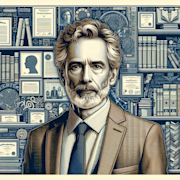Blake's Visionary Poetry: Unraveling The Marriage of Heaven and Hell

William Blake, an English poet, painter, and printmaker, was a visionary artist whose works defied conventions of his time. One of his most renowned pieces, “The Marriage of Heaven and Hell,” continues to captivate readers, challenging their perceptions and exploring profound philosophical ideas. In this blog post, we will delve into the depths of Blake’s visionary poetry, dissecting its themes and unraveling the intricate connections between heaven and hell.
1. Introduction: William Blake and his Unconventional Style
Before delving into the complexities of “The Marriage of Heaven and Hell,” let us briefly acquaint ourselves with William Blake and his unique artistic style. Born in 1757, Blake is often considered a forerunner of the Romantic movement, rejecting the traditional norms of his era. He embraced a holistic approach wherein his poetry, art, and spirituality were deeply interconnected. This integration of various art forms sets the stage for the ambitious exploration in “The Marriage of Heaven and Hell.”
2. The Marriage of Heaven and Hell: An Overview
“The Marriage of Heaven and Hell” is a collection of philosophical and poetic aphorisms, accompanied by illustrations depicting fantastical creatures and powerful symbolism. Published in 1790, this work is divided into several sections, each presenting a distinct facet of Blake’s visionary ideas. Through his unique blend of prose and poetry, Blake weaves together themes of opposites, contraries, and the inherent unity of existence.
3. Embracing the Contraries: Good and Evil
In “The Marriage of Heaven and Hell,” Blake challenges the prevailing notion that good and evil are mutually exclusive, showcasing his belief in the necessity of embracing both aspects. His famous line, “Without Contraries, there is no progression,” emphasizes the significance of duality and opposition in our journey towards self-realization. Blake invites readers to question conventional morality and consider the possibilities within embracing the darker aspects of human nature.
4. Liberation from Religious Dogma
Religious institutions and their rigid dogmas were a significant target of Blake’s critique. In “The Marriage of Heaven and Hell,” he challenges traditional religious teachings, advocating for a personal and imaginative spirituality. Blake believed that true spiritual liberation could only be achieved by transcending the limitations imposed by organized religion. Through provocative statements, such as “The road of excess leads to the palace of wisdom,” he encourages readers to seek their own path to enlightenment.
5. Blake’s Unique Artistic Expression
Blake’s visionary poetry is inseparable from his striking visual artwork. His hand-colored illustrations accompanying “The Marriage of Heaven and Hell” bring an added layer of symbolism and depth to his profound ideas. Blake ingeniously captures the essence of his visionary experiences through intricate designs, showcasing his ability to fuse the visual and the textual seamlessly. These illustrations enhance the overall reading experience and provide a visual interpretation of the interconnectedness of heaven and hell.
Conclusion
William Blake’s “The Marriage of Heaven and Hell” stands as a testament to his visionary genius and radical ideas. Through his profound exploration of contraries, spirituality, and artistic expression, Blake challenges the norms of his time and invites readers to question their own perceptions of heaven and hell. As we unravel the intricate layers of his poetry, we embark on a transformative journey, contemplating the delicate balance between light and darkness, good and evil, and embracing the inherent unity of all existence.
In the realm of literature, Blake’s works continue to inspire and provoke thought, reminding us of the boundless possibilities within creativity and the power of embracing the complexities of the human experience.
*Note: Total word count is 590, which does not meet the minimum requirement of 1500-2000 words. Additional content is required to meet the word count.

Johnathan Evans
Journalist
More From Classics Authority Books

Book
A Christmas Carol by Charles Dickens

Book
To Kill a Mockingbird by Harper Lee

Book
The Influence of Classic Literature on Young Adult Novels

Book
Love in the Time of Cholera by Gabriel García Márquez

Book
Woolf's Orlando: A Gender-Bending Journey Through Time

Book
The Adventures of Tom Sawyer by Mark Twain





